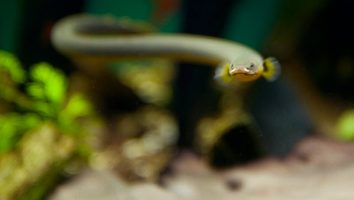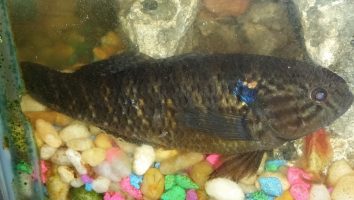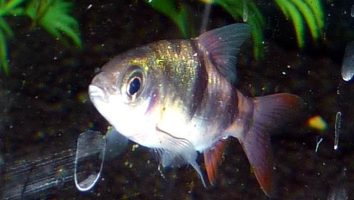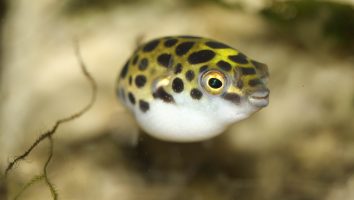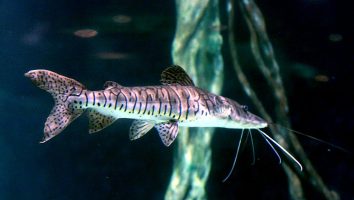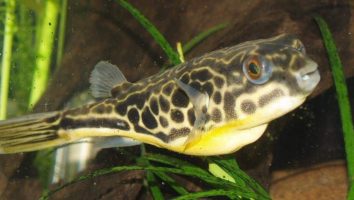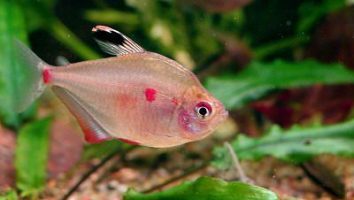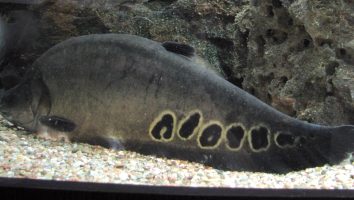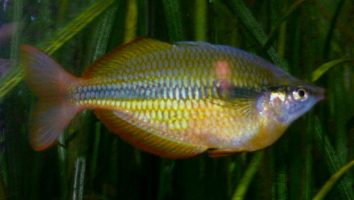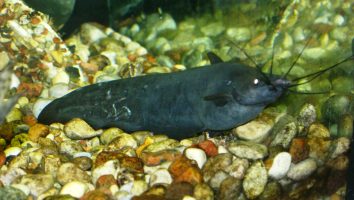The Black-winged hatchetfish is a beautiful, but delicate freshwater fish.
This species is not for everyone, as they require a very specific set of conditions to thrive. But if you’re up for the challenge, they make a wonderful addition to any aquarium.
In this guide, we’ll teach you everything you need to know about Black-winged hatchetfish care. You’ll learn about their diet, tank mates, lifespan, and more!
Table of contents
Species overview
The black-winged hatchetfish (Carnegiella marthae) is a small freshwater fish that’s found in the Orinoco River basin in South America.
This area is characterized by slow-moving waters with a lot of overhanging vegetation. These fish are very adept at hiding among the plants and are very difficult to spot when they’re in their natural environment.
The black-winged hatchetfish is a very peaceful fish that does well in a community tank. They are shy by nature and tend to stay near the bottom of the tank.
One of the most unique things about this fish is its ability to leap out of the water. They use this as a defense mechanism against predators and can easily clear distances of up to 3 feet!
Appearance
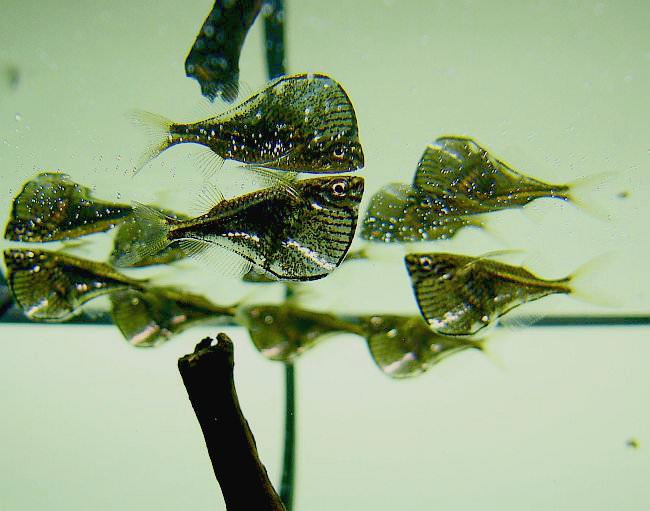
The first thing you’ll notice about this species is their unique shape. As their name implies, these fish have a body shape that’s similar to a hatchet.
They’re very thin (almost transparent) fish with a long and slender body. Their tails are very thin as well and get gradually thinner towards the end.
The dorsal and anal fins are both small and set towards the back end of the fish. Both of these fins are roughly the same size.
Their pectoral fins are large and wing-like. These fins help them move quickly and make sudden turns.
The caudal fin is forked and also quite large. This fin helps them move through the water with ease and make sudden turns.
The Black-winged hatchetfish is a very dark fish. Their bodies are a deep black color that fades to a dark gray on their upper half.
The only thing that really stands out on their bodies is the two white stripes that run down the length of their sides. These stripes are quite thin and run from their snouts all the way to the end of their tails.
Lifespan
Black-winged hatchetfish have a lifespan of 5 to 8 years.
The lifespan of a black-winged hatchetfish is largely determined by the quality of care they receive. Things like water quality, diet, and tank mates can all have an impact on their lifespan.
Size
Black-winged hatchetfish grow to be about 3 inches in length.
Tank
Tank Size
The minimum tank size for black-winged hatchetfish is 30 gallons. If you’re looking for a schooling fish, you’ll need to add at least 5 more gallons for each additional fish.
These fish are also known to be very jumpy, so you’ll need to make sure your tank is covered. We recommend a tank with a lid or a canopy to make sure your fish don’t escape.
Water Parameters
The Black-winged hatchetfish is a tropical freshwater fish that is found in the Amazon Basin. In the wild, they inhabit slow-moving waters with plenty of vegetation.
To care for Black-winged hatchetfish, you will need to provide them with an aquarium that meets their water needs.
- Water temperature: 75 to 82 degrees Fahrenheit
- pH levels: 6.0 to 7.5
- Water hardness: 2 to 12 dGH
- Alkalinity Levels: 4-8 dKH
What To Put In Their Tank
These fish come from slow-moving rivers and streams in South America, so they’re used to a fairly specific type of habitat.
When setting up an aquarium for Black-winged Hatchetfish, you’ll want to start with a substrate of fine sand. This will give them a place to bury themselves and feel comfortable.
The next thing you’ll want to include is some driftwood. These fish love to hide in and around wood, so it’s a good way to give them some shelter.
After that, you can add in some plants. These fish are known to eat plants, but they usually prefer softer varieties like Java Moss or Water Wisteria.
Finally, you can add in some rocks. These can be used to create hiding spots or barriers between different areas of the tank. Just make sure they’re big enough that the fish can’t swim through them.
Common Diseases
Black-winged hatchetfish are a pretty hardy species, but that doesn’t mean they don’t get sick from time to time.
The most common disease that these fish experience is ich. This is a parasite that will attach itself to your fish and begin feeding on their blood.
You’ll be able to see the ich as small white spots on the body of your fish. If left untreated, ich can be fatal.
The best way to prevent ich (and other diseases) is to maintain clean and stable water conditions in your tank. A well-maintained tank will lead to healthier fish who are more resistant to disease.
Behavior & Temperament
The Black-winged hatchetfish is a peaceful creature that spends most of its time in mid-water or near the surface. It’s not uncommon to see these fish swimming in pairs or small groups.
They are relatively shy fish, so they may not be the best option if you’re looking for something that is interactive. They prefer to stick to themselves and stay out of the way.
The Black-winged hatchetfish is a nocturnal creature, so you’ll see them the most at night. This is when they are the most active and when they do the majority of their feeding. During the day, they tend to rest near the bottom of the tank or in hiding places.
Tank Mates
Black-winged hatchetfish are delicate and need to be kept in a peaceful community tank. They’re not aggressive and do best when kept with other small, peaceful fish.
They’re also a bit delicate and need to be kept in pristine water conditions. This means that they’re not the best candidate for a beginner aquarium.
That being said, here are some compatible black-winged hatchetfish tank mates:
- Neon Tetras
- Cardinal Tetras
- Ember Tetras
- Ghost Tetras
- Rummy Nose Tetras
- Harlequin Rasboras
- White Cloud Mountain Minnows
- Corydoras Catfish
Breeding
Black-winged hatchetfish are not easy to breed in captivity. In fact, it’s only been done a handful of times. If you’re up for the challenge, here’s what you need to know.
This species is native to South America. In the wild, they live in slow-moving rivers with dense vegetation. That’s the environment you need to recreate if you want to have any success.
Start by setting up a tank that’s at least 50 gallons. Then, add a layer of live plants on the bottom. Hatchetfish like to lay their eggs in the plants.
You can use any type of plant, but Java Fern and Anubias work well. Make sure the plants are anchored securely. Hatchetfish are known to uproot them when they’re spawning.
After the plants are in place, fill the tank with slow-moving water. Aim for a temperature between 68 and 74 degrees Fahrenheit. The water should be on the acidic side with a pH of 6.0.
When everything is ready, add a group of 6 hatchetfish to the tank. It’s best to have 3 males and 3 females. The males will start to compete for the attention of the females.
You’ll know spawning is about to happen when the males start to build nests out of plant material. Once the nests are built, the females will lay their eggs in them. The males will then fertilize the eggs and continue to guard them.
After about a week, the eggs will hatch. The fry will be very small, so you’ll need to feed them live foods. Baby brine shrimp and micro worms work well.
As they grow, you can gradually start to introduce them to flakes and pellets.
Conclusion
Black-winged hatchetfish are a great addition to any freshwater tank. They’re beautiful, active fish that are relatively easy to care for.
The only real downside to these fish is that they’re not very tolerant of poor water quality. So, if you’re thinking about getting one of these fish, be sure to have a good filtration system in place.
Other than that, we think they’re a great fish for most aquariums and would recommend them to any fish owner!

